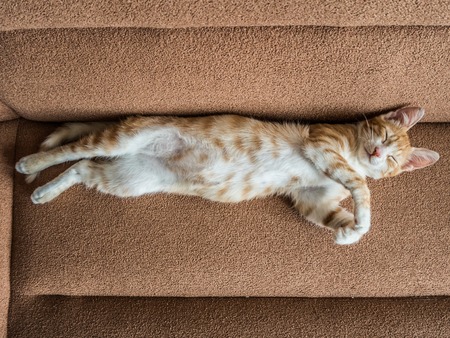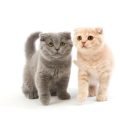Introduction to Britain’s Favourite Felines
When you stroll through the quaint streets of London, pop by a charming countryside cottage, or sip tea in a bustling city flat, you’ll likely find a furry feline lounging somewhere nearby. Cats have woven themselves into the very fabric of British life, earning their place as one of the nation’s most beloved companions. But what is it about these graceful creatures that has captured the hearts of Britons for centuries? In this ultimate guide, we’ll delve into why cats are so adored across the UK, tracing the unique and storied relationship between Brits and their moggies. From their historical significance—think ship cats on Royal Navy vessels—to their modern-day role as cherished members of the family, cats have become symbols of comfort, independence, and understated charm. Whether curled up by the hearth during a drizzly afternoon or embarking on garden adventures, our feline friends bring joy and companionship in a way only they can. Join us as we explore the rich history, delightful traits, and essential care tips for popular cat breeds found throughout Britain—uncovering just what makes these whiskered wanderers quintessentially British.
2. A Journey Through History: Origins of Popular UK Cat Breeds
If you’ve ever wandered the quaint streets of an English village or lounged in a city flat with your feline companion, you may have wondered about the stories behind the UK’s beloved cat breeds. British cats are more than just adorable housemates; they’re living testaments to centuries of history, legend, and royal intrigue. Let’s take a journey through time and meet some of the UK’s most cherished breeds, from enigmatic moggies to blue-blooded pedigrees.
The British Shorthair: Aristocrat of the Cat World
The British Shorthair, often recognised for its plush coat and round, expressive eyes, boasts a heritage dating back to Roman times. Originally brought over by Roman invaders to keep granaries mouse-free, these sturdy felines became woven into British folklore and eventually graced many a manor house. Their famously calm demeanour has earned them the nickname “the teddy bear of cats.”
Scottish Fold: The Whimsical Highlander
With their signature folded ears and sweet expressions, Scottish Folds originated from a single farm cat named Susie in Perthshire during the 1960s. This unique breed quickly captured hearts across the UK and beyond. Their gentle nature and quirky looks make them stand out in any household.
Sacred Connections: Royal Favourites & Mystical Moggies
| Breed | Origin Story | Notable Traits |
|---|---|---|
| British Shorthair | Roman Britain; favoured by royalty for their poise | Calm, loyal, robust health |
| Scottish Fold | 1960s Scotland; farm cat with unique mutation | Folded ears, affectionate, playful |
| Burmese (UK Variant) | Brought to Britain post-WWII; prized by aristocrats | Sleek coat, vocal, social butterflies |
| Moggie (Domestic Shorthair) | No pedigree; roots in every British neighbourhood | Diverse looks, hardy, adaptable |
Moggies: Britain’s Everyday Legends
No guide would be complete without mentioning the humble moggie—the affectionate term Brits use for mixed-breed cats. Found on park benches in London or curled up by rural Aga stoves, moggies represent the heart and soul of British feline companionship. Each comes with its own unique patchwork history and personality.
Paws & Tales From Across the Isles
Whether it’s tales of ship cats voyaging with naval explorers or legends of churchyard guardians protecting ancient sites, UK cats have always been entwined with local lore. These furry adventurers have left their pawprints on both history books and our hearts.

3. Meet the Breeds: Personality and Physical Traits
If you’ve ever strolled through a British home or visited a local cat café, you’ll know that each feline brings its own dash of charm to the table. From the regal looks of the British Shorthair to the playful antics of the Siamese, UK cat breeds are as diverse as the landscapes from Cornwall to the Scottish Highlands. Let’s embark on a delightful adventure to discover what makes these beloved breeds so endearing—and which might just steal your heart (and your spot on the sofa).
| Breed | Appearance | Personality | Notable Quirks |
|---|---|---|---|
| British Shorthair | Plush, dense coat; round face; copper eyes | Calm, affectionate, dignified | Loves lounging; surprisingly playful in short bursts |
| Siamese | Sleek body; striking blue eyes; pointed markings | Vocal, social, intelligent | Chatty companions who follow you everywhere |
| Maine Coon | Large frame; tufted ears; bushy tail | Gentle, friendly, dog-like loyalty | Enjoys water and fetch games; gentle giant vibes |
| Bengal | Leopard-like spots; athletic build | Active, adventurous, confident | Loves climbing and exploring every nook at home |
| Scottish Fold | Distinctive folded ears; round features | Sociable, sweet-natured, easy-going | Cute “owl” look; enjoys curling up in odd places |
| Ragdoll | Semi-long fur; blue eyes; large size | Docile, gentle, cuddly | Limp when picked up—true to their name! |
The British Shorthair: Classic Comfort with a Dash of Sassiness
This quintessentially British breed is the epitome of plush comfort—think of them as your living room’s fuzzy armchair. While they love a good lounge by the fire, don’t be fooled: they can surprise you with a cheeky dash around the house or an expertly executed pounce.
The Siamese: The Socialites of the Cat World
Siamese cats are Britain’s chatterboxes. If you’re keen for conversation and company while enjoying your morning cuppa, this breed won’t disappoint. Their intelligence means they pick up tricks quickly (and may even open a cupboard or two in search of treats).
The Maine Coon: A Gentle Giant for Family Adventures
Maine Coons are perfect for those who fancy a bit more “dog” in their cat—loyal, loving, and always up for a spot of fun. Don’t be surprised if yours decides to join you for a walk in the garden or tries to dip their paws in your bathwater!
A Quick Glance at Breed Charms
- Bengals: For those who crave wild beauty and endless energy—a cat that thinks it’s on safari in your living room.
- Scottish Folds: Soft voices and softer hearts—these cats love companionship and have an adorable penchant for perching.
- Ragdolls: The ultimate lap warmers—ideal for rainy afternoons spent indoors with a good book.
Your Perfect Match Awaits
No matter where your travels take you across the UK—from bustling London flats to cosy cottages in Yorkshire—there’s a cat breed whose quirks will fit right in with your lifestyle. Whether you seek playful mischief or serene companionship, understanding these unique traits ensures both you and your furry friend enjoy many happy adventures together.
4. Paws and Whiskers: Essential Care Tips for British Cats
When it comes to caring for your feline friend in the UK, there’s a unique set of considerations to keep them purring through all four seasons. From chilly Scottish winters to those rare sun-soaked Cornish afternoons, here are practical tips tailored for the British climate and lifestyle.
Weathering the Weather: Keeping Your Cat Cosy
British weather can be unpredictable, and our cats often feel it more than we think. Ensure your home has warm, draught-free spots—cats love windowsills, but a heated bed or a soft blanket by the radiator is perfect for frosty mornings. During summer, provide cool retreats away from direct sunlight, especially for breeds with thick coats like the British Shorthair.
Nutrition Fit for a Feline Aristocat
The UK boasts a variety of high-quality cat foods, but always opt for complete diets that match your cat’s breed and lifestyle. Indoor moggies might need fewer calories than adventurous outdoor explorers. Fresh water is a must—even if your kitty prefers sipping from a running tap!
Feeding Guidelines Table
| Breed | Activity Level | Recommended Diet Type |
|---|---|---|
| British Shorthair | Moderate | High-protein, low-fat |
| Bengal | High | Protein-rich, energy-dense |
| Siamese | Active | Easily digestible proteins |
| Maine Coon | Moderate/High | Larger kibble, joint support formulas |
The Great Indoors vs. The British Outdoors
Cats in the UK often enjoy both indoor comfort and safe garden adventures. If you let your cat out, ensure gardens are secure and avoid toxic plants like lilies. Microchipping is essential (and now law), so if your furry mate does wander off during a countryside ramble, they can be safely returned.
Keeping Cats Entertained—Rain or Shine
A bored cat can quickly turn into a mischievous one! Invest in sturdy scratching posts, puzzle feeders, and plenty of toys to suit their hunting instincts. Window perches offer hours of entertainment—especially when bird-watching during classic British drizzle.
Enrichment Ideas Table
| Toy/Activity | Best For Breeds | UK Home Tip |
|---|---|---|
| Puzzle Feeders | Siamese, Bengal | Great for rainy days indoors |
| Catnip Mice | All breeds | Keeps hunting instincts sharp even in flats |
| Window Perches | Maine Coon, British Shorthair | Perfect for bay windows with garden views |
| Tunnels & Hideaways | Bengal, Active breeds | Create adventure trails in living rooms or conservatories |
Pawsitive Health Habits & Vet Visits
Regular check-ups with your local vet are vital—especially as some breeds are prone to specific health issues. Vaccinations, flea treatments, and worming should all be kept up to date. Don’t forget dental care; British cats do love their treats, but healthy teeth mean happy whiskers.
A Final Word on Responsible Guardianship
Caring for cats in the UK isn’t just about pampering—it’s about respecting animal welfare standards and giving our companions the best life possible. With these tips and a bit of British common sense, your furry mate will be ready for any adventure—indoors or out!
5. In the Home, In the Heart: Life With Cats in British Culture
Across the UK, cats have carved out a special place not just in our homes, but also in our hearts and traditions. Whether you’re wandering through an idyllic Cotswolds village or navigating bustling London streets, you’ll spot signs of feline influence everywhere—from the familiar “cat on the mat” by the fireplace to charming cat-themed tea towels hanging in kitchens.
The Cat’s Whiskers in British Households
Cats are more than pets; they’re part of the family. The British Shorthair, with its plush blue-grey coat and calm demeanour, is a staple in many homes, admired for its loyal yet independent spirit. Meanwhile, moggies (mixed-breed cats) are beloved for their unique personalities and resilience. Cats are cherished companions for everyone from city dwellers in compact flats to countryside folk in sprawling farmhouses.
| Cat Breed | Typical Role at Home | Common Traits |
|---|---|---|
| British Shorthair | Laid-back companion | Loyal, gentle, good with children |
| Maine Coon | Playful entertainer | Sociable, affectionate, intelligent |
| Burmese | Active friend | Vocal, curious, loving |
| Moggie (Mixed Breed) | Mischievous mate | Diverse personalities, adaptable |
Paws in Pop Culture and Traditions
Cats often pop up as iconic figures in British literature and media—think of the enigmatic Cheshire Cat from “Alice’s Adventures in Wonderland,” or the ever-watchful Mrs Norris from Harry Potter. They’re regulars in children’s books and feature on everything from Royal Mail stamps to local pub signs. Even at Christmas time, don’t be surprised to find a festive card featuring a tabby peeking out from under a tree!
Everyday Feline Rituals and Superstitions
British daily life is peppered with charming cat-related customs. It’s considered good luck if a black cat crosses your path—a belief dating back centuries. Many households make room for a sunny windowsill so their feline friend can bask comfortably while watching passers-by. And let’s not forget “Caturday,” when social media fills with snapshots of proud owners’ whiskered companions getting up to all sorts of mischief.
Cats as Community Spirits
Cats aren’t just private pals—they often become beloved fixtures of entire neighbourhoods. From shop cats snoozing on counters to station cats like Felix at Huddersfield Railway Station, these furry friends foster a sense of community togetherness that feels uniquely British.
6. Where to Find Your Perfect Puss: Adoption and Breed Resources
If you’re dreaming of welcoming a new feline companion into your British home, it’s essential to do so responsibly—whether you’re hoping for a moggy with bags of character or a pedigreed puss with a storied heritage. Here’s your local guide to finding your next furry adventurer, from rescue shelters brimming with charmers in need of love, to reputable UK breeders offering well-raised pedigree kittens.
Adoption: Giving Cats a Second Chance
There are thousands of cats across the UK waiting for their forever homes. Adopting not only saves lives but also brings you a friend who is grateful for a new start. Many rescues and shelters offer thorough health checks, vaccinations, and honest background information about their residents. Explore some trusted adoption options below:
| Shelter/Rescue | Location | Website |
|---|---|---|
| Cats Protection | Nationwide | cats.org.uk |
| Battersea Dogs & Cats Home | London & South East | battersea.org.uk |
| Blue Cross | Across England & Wales | bluecross.org.uk |
| RSPCA Cat Adoption | Nationwide | rspca.org.uk/findapet |
Reputable UK Breeders: For Those Seeking Specific Breeds
If your heart is set on a particular breed—perhaps the luxurious British Shorthair or the elegant Siamese—choosing an ethical breeder is vital. Look for breeders registered with official organisations, who prioritise health, temperament, and welfare above all else.
| Breed Club/Breeder Registry | Speciality | Website |
|---|---|---|
| The Governing Council of the Cat Fancy (GCCF) | All Pedigree Breeds (UK’s primary registry) | gccfcats.org |
| The British Shorthair Cat Club | British Shorthair Specialists | britishshorthaircatclub.co.uk |
| The Siamese Cat Club | Siamese Breed Experts | siamesecatclub.org.uk |
| TICA UK (The International Cat Association – UK) | Diverse Breeds & International Standards | tica.org/breeds/find-a-breeder |
Tips for Responsible Adoption or Purchase:
- Visit the cattery or shelter in person whenever possible.
- Ask to see veterinary records and health certificates.
- Ensure kittens stay with their mothers until at least 12 weeks old.
- Avoid breeders who always have litters available or won’t answer detailed questions about their cats’ welfare.
- If adopting, be patient—the right cat will find you!
The Joy of Finding Your Feline Match in the UK
No matter if you’re drawn to a cheeky rescue moggy or a noble pedigree breed, Britain offers abundant opportunities for safe and ethical cat ownership. Do your research, trust your instincts, and soon you’ll be sharing your home—and perhaps your next countryside ramble—with the purrfect companion by your side.


